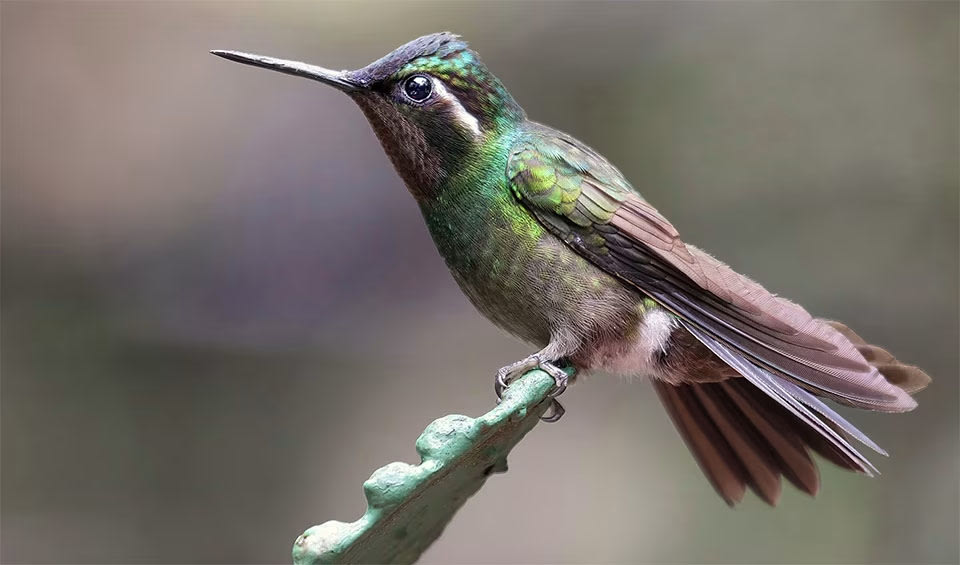The Purple-throated mountain gem is a dazzling jewel of the high-altitude cloud forests, captivating birdwatchers with its enchanting beauty and unique distribution across southwestern Nicaragua, northwestern Costa Rica, and central western Panama.
This striking hummingbird exhibits a distinctive appearance, with both males and females adorned with a dark, straight bill and iridescent green feathers that shimmer like emeralds in the dappled sunlight of their forest habitat. However, the males truly stand out, boasting a resplendent purple or violet throat that lends them their name, while the females display a more subtle palette of pale, rufous tones on their undersides.
While the Purple-throated mountain gem’s exquisite plumage may steal the show, its ecological role as a primary nectar feeder and pollinator is equally significant. These remarkable birds play a vital role in the reproductive cycles of numerous plant species, including many orchids and other flowering plants endemic to their cloud forest habitats. By sipping nectar from blossoms and transferring pollen from flower to flower as they forage, they facilitate the continuation of these delicate ecosystems.
Despite their primary reliance on nectar as a food source, Purple-throated mountain gems also supplement their diet with insects, which provide essential protein and nutrients, particularly during the breeding season when the energetic demands are high. Males, in particular, are known for their aggressive behavior when defending prime feeding territories, often engaging in fierce battles with rival males to secure access to the most abundant nectar sources. However, they display a softer side during courtship, graciously sharing their coveted flower patches with receptive females.
Distribution
 Costa Rica
Costa Rica Nicaragua
Nicaragua Panama
PanamaAnything we've missed?
Help us improve this page by suggesting edits. Glory never dies!
Suggest an editGet to know me
Terrestrial / Aquatic
Altricial / Precocial
Polygamous / Monogamous
Dimorphic (size) / Monomorphic
Active: Diurnal / Nocturnal
Social behavior: Solitary / Pack / Herd
Diet: Carnivore / Herbivore / Omnivore / Piscivorous / Insectivore
Migratory: Yes / No
Domesticated: Yes / No
Dangerous: Yes / No




